#bacillus subtilis fungicide
Text
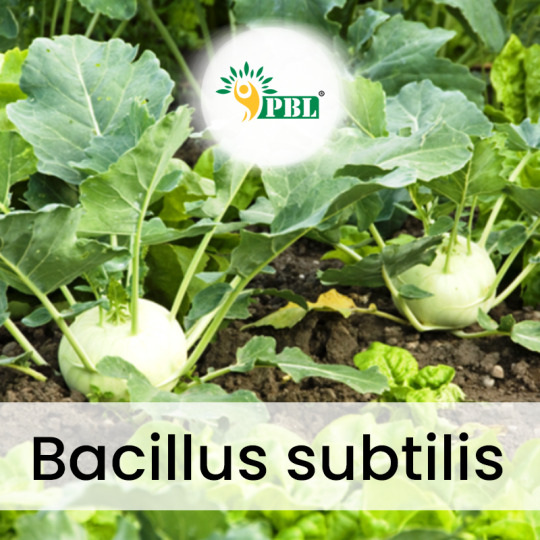
Bacillus Subtilis Biofungicide
Bacillus subtilis biofungicide is a powerhouse solution in plant protection and growth enhancement. Functioning as both a biofungicide and a Plant Growth Promoting Rhizobacteria (PGPR), it fortifies roots by deterring spore germination in plant pathogens and inhibiting their attachment. This exceptional biopesticide excels against soil-borne fungal diseases, as well as leaf and fruit infections. Bacillus Subtilis fungicide thrives in its role, fostering nutrient fixation, soil phosphorus solubilization, and siderophore production. By promoting secondary metabolites, phytohormone regulation, and stress resilience, it nurtures robust plant health, instigates vigorous growth, and primes roots for optimal vitality.
#bacillus subtilis#bacillus subtilis biofungicide#bacillus subtilis biopesticide#bacillus subtilis fungicide#bacillus subtilis manufacturers
0 notes
Text
Bacillus subtilis A Workhorse in Microbial Biocontrol
A brief description of Bacillus subtilis as a Biocontrol Agent.
In the world of sustainable agriculture, Bacillus subtilis is a vital player. This soil-dwelling bacterium has been known for its exceptional capabilities in promoting plant development and resisting pathogens. With the growing refusal of intensive plant production towards chemical pesticides, Bacillus subtilis seems to be quite a feasible eco-friendly biocontrol agent.
Bacillus Subtilis Fungicide: A Natural Solution by Novobac
Bacillus subtilis, a widely used fungicide in agriculture, is known for its plant growth-promoting rhizobacteria (PGPR) properties and biocontrol capabilities. It significantly enhances plant growth and boosts resistance to abiotic stress.
When introduced to soil, B. subtilis effectively outcompetes other soil microorganisms, providing an efficient biological solution for controlling fungal diseases. For more information about natural plant fungicides, check out Novobac's innovative bio products which is a professional supplier offering a variety of products in both powder and liquid suspension forms.
Biocontrol by Bacillus subtilis Mechanisms.
The mechanism through which Bacillus subtilis protects the plants is multifold. It secretes substances that suppress pathogenic bacteria and fungi, thereby preventing illnesses. It also promotes plant development by increasing nutrient bioavailability and root formation. Its capacity to trigger systemic acquired resistance (SAR) in plants is also interesting; this preparedness makes the plant able to resist subsequent pathogen assaults.
Mode of Action in Agriculture
Bacillus subtilis has a wide range of practical applications in agriculture. This biocontrol agent has shown tremendous success from small-scale gardens to large scale agricultural fields in enhancing plant health and yield. It is easy to apply Novobac where the use of water in both soil drench and foliar sprays has its own guidelines so that farmers can be able to manage this organic remedy.
During its growth, B. subtilis produces active substances like subtilin, polymyxin, and gramicidin, known to effectively suppress pathogenic bacteria. This enhances root development, improves nutrient absorption, and boosts overall crop growth and yield. It also increases plant resilience to abiotic stresses, such as drought and high salinity.
B. subtilis triggers systemic acquired resistance (SAR) in plants, activating their defense mechanisms against bacterial pathogens preemptively. It colonizes the rhizosphere (the soil surrounding plant roots) and foliage, preventing the germination of spores from plant pathogens and thereby inhibiting their growth.
Additionally, B. subtilis helps in unlocking and solubilizing vital soil nutrients like phosphorus, calcium, potassium, and magnesium, making them more accessible to plant roots.
Environmental Impact and Safety
One of the greatest benefits to using Bacillus subtilis for biocontrol is its low ecological impact. Unlike chemical pesticides, it does not taint soil or water with harmful residues and is therefore a safe option for the ecosystem as well as human beings. Novobac’s product meets international safety standards and is considered safe to be used in different agricultural contexts.
Bacillus subtilis: A Workhorse in Microbial Biocontrol
Bacillus subtilis, especially Novobac Soil Vigor, has deservedly been named a microbial workhorse in biocontrol. The versatility and performance in different farming conditions indicate its contribution to the sustainable agriculture of tomorrow. Novobac’s newest product is a symbol of how this bacterium can be used to improve agriculture and the environment.
The future of farming is sustainable and Bacillus subtilis leads this new age. Installed in 2013, Novobac’s Bacillus subtilis fungicide is not a product but rather an emblem of the new direction towards more accountable, efficient and eco-friendly agriculture. With these natural measures and tools, we are nearing a world in which agriculture lives with nature while at the same time restoring our planet for future generations.
Bacillus subtilis: Revolutionizing Agriculture with Natural Solutions from Novobac - A Workhorse in Microbial Biocontrol.
In the fast-paced world of farming innovation to combat crop diseases has seen microbial biocontrol agents assume a significant role with B. subtilis emerging as an outstanding agent. This is a naturally occuring soil bacterium that has gained reputation as it has ability to improve plant growth and offered strong resistance for a diverse range of plant pathogens. Novobac, a front-runner in agricultural modernization has used the prowess of Bacillus subtilis in its advanced fungicide saving on chemicals for use by farmers and gardeners.
Benefits of Bacillus Subtilis
- Inhibits bacterial and fungal diseases through biocontrol.
- Enhances soil quality and fertility.
- Boosts plant growth and improves yields.
- Strengthens plant-microbe interactions via biofilm formation.
- Alleviates abiotic stress through enzymatic and hormonal adjustments.
- Prevents the spread of antibiotic resistance genes and transposons.
- Triggers induced systemic resistance (ISR) in plants.
- Acts as an effective biocontrol agent through lipopeptide production.
Environmental Impact and Safety
The minimized level of environmental impact is one major benefit associated with the use of Bacillus subtilis as a biocontrol agent. In comparison, chemical pesticides may become toxic residues that are harmful to the soil and ecology while Bacillus subtilis belongs in nature; it is a constant factor of the microbiome. Novobac’s product is safe to use in accordance with stringent safety and regulatory requirements. These characteristics make it a good option for farmers and gardeners who understand their environmental impact, and are aware of safe natural remedies against plant diseases.
0 notes
Text
Bacillus Subtilis Manufacturers
Description: Bacillus Subtilis Manufacturers
A Potent bio fungicide and Plant Growth Promoting Rhizobacteria (PGPR) .
Safeguards plants by forming a protective shield on roots, hindering spore germination in plant pathogens, and outcompeting soil microbes.
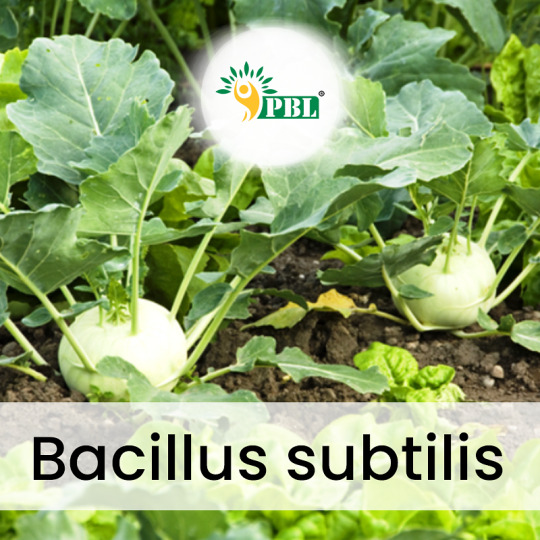
Disease Prevention:
Inhibits pathogen attachment, colonizes roots, and prevents soil-borne and foliar diseases.
Nutrient Enhancement:
Improves nitrogen fixation, solubilizes soil phosphorus, and produces siderophores for robust plant growth.
Secondary Metabolites:
Induces the production of plant secondary metabolites, regulates phytohormones, and enhances stress tolerance.
Competitive Effects:
Outcompetes pathogens through nutritional and spatial locus competition in the rhizosphere.
Antibacterial Materials:
Deploys subtilin, organic acids, and antibacterial proteins to inhibit pathogenic bacteria, enhancing disease resistance.

PEPTECH BIOSCIENCES LTD
+91-11-71239900
909, 9th Floor, Bigjos Tower,
Netaji Subhash Place ,New Delhi -110034
0 notes
Link
A New Dawn in Agricultural Solutions FMC India, a trailblazer in the field of agricultural sciences, has rolled out its groundbreaking product, ENTAZIA Biofungicide. This eco-friendly solution is designed to offer farmers an effective yet sustainable means to shield their crops from fungal infections. [caption id="attachment_52039" align="alignright" width="302"] ENTAZIA Biofungicide[/caption] ENTAZIA Biofungicide: The Science Behind the Innovation ENTAZIA Biofungicide is not just another fungicide; it's a biological marvel formulated with Bacillus subtilis. This naturally occurring bacterium is harnessed to combat bacterial leaf blight, a major threat to rice crops. The product activates the plant's innate defense mechanisms, making it a formidable foe against pathogens. A Dual Approach: Safety and Efficacy What sets ENTAZIA apart is its commitment to environmental integrity. While it acts aggressively against bacterial leaf blight, it remains benign to natural predators and parasites. This makes it an ideal component in an integrated pest management strategy, alongside FMC's biostimulants and synthetic fungicides. A Word from the Leadership Ravi Annavarapu, President of FMC India, expressed, "ENTAZIA Biofungicide is a testament to our commitment to sustainable farming. We believe this product will be a cornerstone in advancing biological solutions in India's agricultural sector." FAQs on ENTAZIA Biofungicide What is ENTAZIA Biofungicide? ENTAZIA is a biological crop protection product developed by FMC India to combat bacterial leaf blight in rice crops. How does ENTAZIA work? ENTAZIA utilizes Bacillus subtilis to activate the plant's natural defense system against bacterial leaf blight. Is ENTAZIA environmentally friendly? Yes, ENTAZIA is designed to be eco-friendly and does not harm natural predators or parasites. Can ENTAZIA be used with other FMC products? Yes, ENTAZIA can be integrated into a pest management program that includes FMC's biostimulants and synthetic fungicides. Description FMC India introduces ENTAZIA Biofungicide, a revolutionary, eco-friendly crop protection solution. Formulated with Bacillus subtilis, it offers a sustainable way to combat bacterial leaf blight in rice crops.
#Bacillus_subtilis#Bacterial_Leaf_Blight#Biostimulants#Crop_Protection#ENTAZIA_Biofungicide#FMC_India#Integrated_Pest_Management#sustainable_agriculture#Synthetic_Fungicides
0 notes
Text
Bacillus subtilis
Fungicide products containing Bacillus subtilis can be used to control tomato gray mold, rice blast, wheat powdery mildew, citrus green mold, tobacco black shank and cabbage soft rot and other diseases.
Studies have found that Bacillus subtilis can secrete antibiotics, cell wall degrading enzymes, chitinase and other substances to inhibit the germination of pathogenic fungal spores and the…
View On WordPress
0 notes
Text
Preventing and Treating Common Tomato Diseases
Preventing and treating common tomato diseases is essential for maintaining healthy plants and ensuring a successful harvest.
Here are some tips to help you prevent and manage common tomato diseases:
Choose disease-resistant varieties: Select tomato varieties that are known for their resistance to common diseases in your area. Look for labels or descriptions indicating resistance to specific diseases such as Fusarium wilt (F), Verticillium wilt (V), or tomato mosaic virus (TMV).
Rotate your crops: Avoid planting tomatoes and related plants (such as peppers, eggplants, and potatoes) in the same spot year after year. Practice crop rotation by moving tomatoes to different areas of your garden each season. This helps prevent the buildup of soil-borne diseases.
Provide proper spacing: Plant your tomato seedlings with adequate spacing to promote good air circulation. Proper spacing helps prevent the spread of diseases that thrive in damp and crowded conditions.
Use clean tools and equipment: Start with clean gardening tools and equipment to prevent the introduction and spread of pathogens. Clean your tools with a disinfectant solution before and after use, especially if you've been working with infected plants.
Practice good watering practices: Water tomato plants at the base and avoid wetting the foliage. Overhead watering can promote the spread of fungal diseases. Use drip irrigation or a soaker hose to deliver water directly to the soil.
Mulch around plants: Apply a layer of organic mulch around the base of tomato plants to suppress weed growth and maintain consistent soil moisture. Mulch also helps prevent soil-borne diseases from splashing onto the plants during watering or rainfall.
Remove affected plant parts: Promptly remove and destroy any infected or diseased plant parts, including leaves, stems, or fruits. This helps prevent the disease from spreading to healthy parts of the plant.
Use proper fertilization: Avoid excessive nitrogen fertilization, as it can promote lush foliage growth but make plants more susceptible to diseases. Use a balanced organic fertilizer or compost to provide necessary nutrients without overstimulating vegetative growth.
Monitor for pests: Pests can weaken plants and make them more susceptible to diseases. Regularly inspect your plants for signs of pest infestation and take appropriate measures to control them.
Apply organic fungicides: If necessary, use organic fungicides to manage fungal diseases. Copper-based fungicides or those containing Bacillus subtilis can be effective against diseases such as early blight and powdery mildew. Follow the product instructions carefully.
Practice good garden hygiene: Keep your garden clean and free of plant debris, which can harbor diseases. Dispose of infected plant material properly, and regularly clean up fallen leaves or fruits.
Monitor and act promptly: Regularly monitor your tomato plants for any signs of disease, such as yellowing leaves, wilting, or unusual spots. Early detection and immediate action can help prevent the disease from spreading and causing significant damage.
By following these preventive measures and promptly addressing any disease issues, you can increase the chances of a healthy tomato crop and enjoy a bountiful harvest.
Read the full article
0 notes
Text
Biofungicides Market :Advanced Technologies & Growth Opportunities Worldwide By 2024
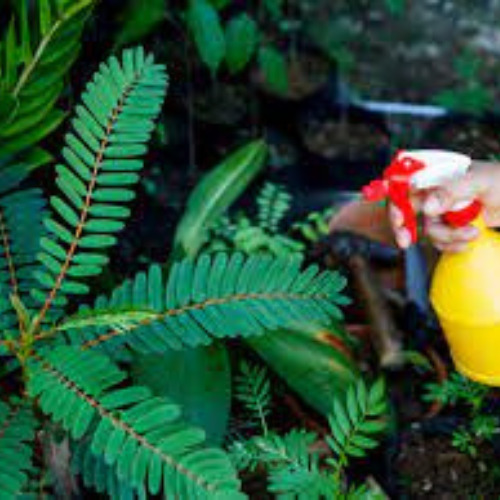
Biofungicides are biological agents that are used to control fungal diseases in plants. They are made from naturally occurring microorganisms such as bacteria, fungi, and viruses that have been isolated from the environment and then formulated into products that can be applied to crops.
Biofungicides work by either inhibiting the growth of fungi or by causing the fungi to become inactive. They are generally considered safer for the environment and human health than chemical fungicides, as they are non-toxic and biodegradable.
Some common types of biofungicides include:
Bacillus subtilis: A bacterium that produces enzymes that can break down the cell walls of fungi.
Trichoderma harzianum: A fungus that can parasitize other fungi and suppress their growth.
Streptomyces lydicus: A bacterium that produces antifungal compounds.
Coniothyrium minitans: A fungus that parasitizes other fungi and can be used to control diseases such as Sclerotinia.
Biofungicides can be used in both organic and conventional agriculture, and are often used in combination with other management practices such as crop rotation and sanitation. However, they may not provide as rapid or complete control as chemical fungicides, and may require more frequent applications.
Overall, biofungicides are a promising tool for sustainable disease management in agriculture, as they offer a natural alternative to chemical fungicides that can reduce the impact of plant diseases on both the environment and human health.
0 notes
Photo
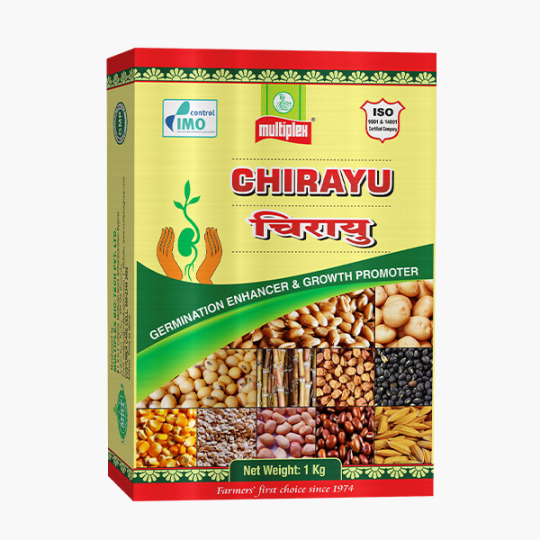
AVAILABLE PACKING:
20 g, 50 g, 100 g, 250 g, 500 g & 1 kg
Crop:
All Crops
DOSAGE & Methods Of Application:
• Seed Treatment: Major crops | Seed rate per Acre | Chirayu Quantity Vegetables :100 to 200 g 5 g Paddy :25 kg 500 g Soybean :40 Kg 500 g Ground Nut: 30 to 40 Kg 500 g Maize: 8 to 10 Kg 250 g Cotton: 2 Kg 100 g Remarks: Quantity varies with size of seeds but dose for different crops is such that seeds should be uniformly coated with sufficient chirayu material • Seedling Root Dip: Mix 100 g Chirayu in 10 liters of water & dip roots for at least 20 min before transplanting • Main Field Application: Mix 1 kg Chirayu in 100 kg well decomposed FYM or Coco peat broad cast over entire acre
Benefits:
• It increases the percentage of seed germination and results in better growth of the seedlings. • It helps in better establishment of Tea cuttings by protecting the rooting. • It protects the seedlings in the early stage from fungal and bacterial diseases by providing protective shield. • It increases early establishment. • Chirayu secretes metabolites which helps in healthy development of plumule and radical in the germinating seed thereby increasing vigour of the plants.
Active Ingredients:
Beneficial Bacteria (Bacillus subtilis) & Beneficial fungus (Trichoderma harzianum) culture with their metabolites
Mode Of Action:
Systemic protection against many seed & soil borne fungal and bacterial diseases like Pythium spp, Phytopthora spp, Fusarium, Rhizoctonia spp etc., also acts as seedling protector, germination enhancer & growth promoter.
Precautions:
CHIRAYU should not be mixed with insecticide, fungicide or weedicide.
https://www.multiplexgroup.com/growthPromoters
0 notes
Text
Dupracetamdextrin-Based Supramolecular Things regarding Osteoinductive Real estate agents for Dentistry Tissues Regrowth
The actual incidence involving intense chest affliction diminished coming from 8-10.5% really to a single.9% this year. Summary Patients addressed with oral morphine slept a new reduced period in the particular Impotence, had more remedy, had been admitted less frequently, coupled with less serious torso affliction #Link# . These types of differences are closely related in order to environment, national, psychological, along with pharmacogenetic components.Antagonistic germs, Bacillus subtilis NJ-18, can biologically manage a number of seed illnesses. A put together strategy of wheat razor-sharp eyespot control consisting of B. subtilis NJ-18 and also fungicides ended up being evaluated. Greenhouse along with industry assessments had been executed to look for the effect of merging the particular B. subtilis NJ-18 together with the fungicides flutolanil as well as difenoconazole for the control over wheat well-defined eyespot caused by Rhizoctonia cerealis Vehicle der Hoeven. The particular awareness regarding T. subtilis NJ-18 to be able to fungicides flutolanil as well as difenoconazole ended up being tested. The increase regarding NJ-18 ended up being unchanged simply by flutolanil inside a broth channel, along with the emergency of NJ-18 spores in wheat seedling had been unchanged by difenoconazole. Within greenhouse tests, illness manage attained which has a mixture of NJ-18 and only #Link# fungicide has been superior to the management acquired with all the germs as well as fungicides on your own, plus some combinations of bacterium in addition fungicide demonstrated a smaller hand in hand impact in reducing condition. Similar outcome was obtained together with repetitive field findings. Along with supplying a highly effective condition management, the use of combinations allowed decreased a higher level fungicide application. Overall, the outcomes advise that a combination associated with N. subtilis stress NJ-18 and also flutolanil or even difenoconazole symbolizes a promising fresh device to the charge of well-defined eyespot associated with wheat or grain. (H) 2013 Elsevier Incorporated. Just about all legal rights reserved.In today's study many of us focused to demonstrate the most popular YMDD pattern variations in virus-like polymerase gene within continual liver disease N people throughout lamivudine and also adefovir therapy. Forty-one serum examples purchased from continual hepatitis B people (Twenty four male, 17 feminine; age range: 34-68 a long time) ended up in the study. HBV-DNA ended up being purchased from the peripheral blood #Link# of the patients having an removing equipment (Invisorb, Quick Spin DNA/RNA Virus Little Package, Indonesia). A collection probe assay and primary sequencing examines (INNO-LIPA HBV DR v2; INNOGENETICS D.V, Ghent, Australia) were used on decide targeted strains from the virus-like polymerase gene throughout beneficial HBV-DNA examples. As many as Forty one mutations located in Twenty one various codons ended up found in the present results. Within 19 (41.5%) people various position mutations ended up discovered resulting in lamivudin, adefovir and/or put together medication opposition. Crazy polymerase gene information had been found throughout 24 (58.5%) HBV optimistic people of the current cohort. Ten of the 18 biological materials (Nineteen.
0 notes
Link
0 notes
Text
Trichoderma Bio Fungicide in India for Soil Born Diseases Management
Trichoderma fungus is a beneficial that helps to protect your plants against molds and bacteria. These tough little funguses are standing up against root rot and gray mold, protecting from loss of your crops. They create a barrier that makes it impossible for harmful bacteria and pathogens to pass through. Trichoderma surrounds the roots of your plant releasing compounds that activate their natural systems of defense.
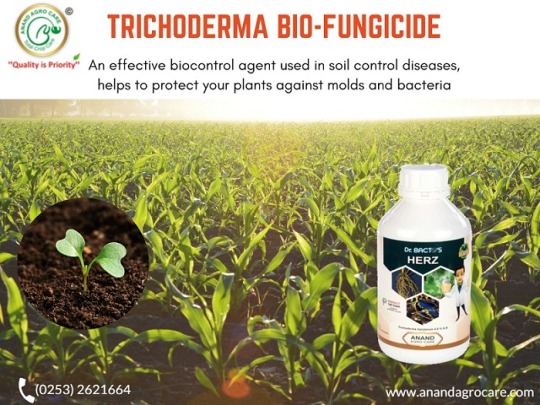
Trichoderma bio fungicide is most effective for all plant and vegetable forms such as cauliflower, peas, sunflower, brinjal, coffee, tea, ginger, turmeric, pepper, betel vine, cardamom cotton, tomato, chillies, potato, citrus, onion, groundnut etc. Trichoderma fungus may suppress the growth of the pathogen population in the rhizosphere through competition and thus reduce disease development. It produces antibiotics and toxins like trichothecin and Trichodermin, a sesquiterpine that has a direct effect on other organisms.
A dynamic growth of biological trichoderma viride fungicide overshadows the pathogenic fungi, which are overpowered and prevented from infecting the plants. They can be blocked and managed by different methods before pathogens attempt infection by germinating seeds or roots. They have developed various mechanisms for both attacking other fungi and enhancing plant and root growth such as mycoparasitis, antibiosis, nutrient or space competition, stress tolerance through increased root and plant production, inorganic nutrient solubilization and sequestration.
Benefits of Trichoderma Bio Fungicide
Disease Control: Trichoderma is an effective biocontrol agent that is commonly used in soil born diseases. It has been widely used against pathogenic fungi of various genera, i.e. Fusarium, Scelerotia, Phytopthara, etc.
Plant Growth Promoter: Trichoderma strains are solubilizing micronutrients and phosphates. The application of plants of Trichoderma strains increases the number of deep roots, thus increasing the ability of the plant to withstand drought.
Biochemical Elicitors of Disease: It is recognized that trichoderma strains induce resistance in plants. It is now known that three groups of compounds are generated by Trichoderma and induce plant resistance. Such compounds induce the development of ethylene, hypersensitive responses and other reactions in plant cultivars related to protection.
Transgenic Plants: The introduction of Trichoderma endochitinase gene into plants such as tobacco and potato plants has improved their fungal growth resistance.
Bioremediation: In the bioremediation of soil polluted with pesticides and herbicides, trichoderma strains play an important role. These have the ability to kill a number of insecticides, including organochlorines, organophosphates and carbonates.
Trichoderma bio-fungicide is used to protect crops such as cotton, soybean, sugar cane, sugarbeet, eggplant, red gram, bengal gram, banana, cardamom etc. You do not use any chemical fungicide after application of Trichoderma for 4-5 days. Trichoderma biofungicide is compatible with biofertilizers like Rhizobium, Azospirillum, Bacillus Subtilis and Phosphobacteria. Trichoderma can be added to metalaxyl or thiram-treated plants, but not mercurials. It can be used as a tank combination of organic fungicides.
Anand Agro Care is a leading Trichoderma bio fungicide manufacturer in India, is a sole proprietorship owned firm, which came into existence in the year 2009. The specialty of our business is to produce and export a wide range of Bio Fertilizers, EDTA Chelated Micronutrients, Bio Fungicides, Bio Insecticides, Bio Nematicides, Plant Nutrition, etc. Our Dr. Bacto's Herz product is a Trichoderma bio fungicide in India containing Mycoparasitic Fungi spores and conidia. Dr. Bacto's Herz prevents seedlings from attacks by soil-borne pathogens causing root / collar / stem rots, wilts, damping offs, leaf blights, etc. By providing state-of - the-art technology and a wide range of products that cover the entire needs of a plant, we fulfill our customers ' requirements through creative and diversified agro inputs.
Visit us: http://bit.ly/2Pshki3
Call us: (0253) 2621664 / (91) 9168915664
2 notes
·
View notes
Text
How to stop fusarium wilt
What is Fusarium wilt on Watermelon?
Fusarium wilt is a common and destructive fungal disease that affects many plants, including tomatoes, potatoes, peppers, eggplants, and ornamentals. Fusarium oxysporum, a soil-borne fungus, is the cause of it. This fungus enters the plant through the roots and spreads up to the vascular system, blocking water transport. As a result, the plant wilts, even when soil moisture is adequate.Fusarium wilt is difficult to control as quickly as plant life are infected. Therefore, prevention is critical in areas prone to this disease.
Causes and Symptoms of Fusarium Wilt
Different formae speciales or races of Fusarium oxysporum that are host-specific are what cause fusarium wilt.The fungal spores can live to tell the tale in soil or plant particles for years. Any damage to the roots from cultivation, insects, nematodes, etc. creates an entry point for the fungus. Common symptoms include wilting of leaves and vines during the day, then recovery at night. Wilting increases over time until the whole plant collapses. Discoloured vascular tissue may be seen when stems are cut. Plants often have stunted growth, yellowing leaves, and reduced yields.
Effects of Fusarium Wilt
Fusarium wilt can lead to major economic losses in food and ornamental crops.It influences each the first-class and amount of yields. Infected plants either die prematurely or have lower yields and smaller fruits. They are also more susceptible to attack by other pathogens. Fusarium wilt spreads quickly between fields, carried by wind, water, and contaminated equipment. Once present in the soil, the fungus can persist for many years. Good management practises are required to prevent the buildup of inoculum.
Preventing Fusarium Wilt
Choosing Resistant Varieties The most effective strategy is to select varieties with genetic resistance to Fusarium wilt races in your area. Resistant rootstocks are available for some species, like tomatoes and melons. Grafting susceptible scions onto resistant rootstocks helps protect plants. Over time, new mutant strains of the pathogen can however overcome resistance.
Crop Rotation
Rotating fields to non-host crops like small grains, grasses, or corn for 2-3 years helps disrupt the disease cycle and reduce inoculum. Avoid planting the same family of crops successively. For example, rotate tomatoes with beans or onions rather than potatoes or eggplants.
Soil Solarization
Solar heating soil under plastic mulch during hot summer months can help reduce fungal pathogens and nematodes. Temperatures of 140°F at 6 inches of depth must be maintained for at least 3–6 weeks. This may not eradicate the fungus but it can lower the inoculum.
Soil pH Management
Fusarium wilt is generally less prevalent in acidic soils. Adding elemental sulphur to maintain a soil pH between 6.0 and 6.5 can help suppress this disease.Avoid immoderate liming, which promotes Fusarium wilt.
Treating Fusarium Wilt
Pruning Infected Parts
Prune out and break visibly inflamed plant parts. This can slow disease spread. Sterilise pruners after each cut with a bleach solution to avoid spreading the fungus. Remove entire plants only if most of the vascular tissue is discoloured.
Fungicides
Apply fungicides like TRIANUM SHIELD as a protective spray several times per season, especially after transplanting. Combine with disinfectants like thymol during early infection. Systemic fungicides are absorbed and distributed through the vascular system. However, their effectiveness is limited once extensive blockage occurs.
Biological Controls
Beneficial microbes like TRICHODERMA HARZIANUM and Bacillus subtilis help protect roots from infection. Apply these preventively as a root dip at planting. Several studies show that combining biologicals with fungicides enhances control. Mycorrhizal fungi improve stress tolerance and induce systemic resistance.
Soil Amendments
Mixing compost high in beneficial microbes before planting has reduced Fusarium wilt severity. Amending the soil with chitin and kelp stimulates chitin-eating bacteria that attack the fungal cell walls. Mustard seed meal releases toxic gases during decomposition that inhibit pathogen growth.
Identifying and Monitoring Fusarium Wilt
Look for Early Symptoms
Scout fields frequently to detect initial symptoms like leaf yellowing and minimal wilting on one side. Check for vascular discoloration by cutting the stems. Send samples promptly for lab diagnosis to confirm Fusarium wilt infection early.
Send Samples for Testing
Submit diseased plant samples to a diagnostic lab for isolation and identification of the specific form of the fungus. This determines which races are present so appropriate resistant varieties can be selected in the future.
Compare Healthy and Infected Plants
Dig up and inspect the roots of wilting plants for lesions or reduced feeder roots. Compare cross-sections of stems from healthy and symptomatic plants to observe vascular browning in the latter. Monitoring disease progression helps track the effectiveness of management tactics.
Long-Term Fusarium Wilt Management
Crop Rotation Plan
Develop a planned sequence for each field using 3–4-year rotations with non-host crops. Track crop history for each site to avoid repeating susceptible species. Clean equipment thoroughly when moving between infected and uninfected fields.
Resistant Varieties
Choose resistant or grafted cultivars adapted for local conditions each season. Monitor for new virulent strains that may overcome resistance. Proactively breed and select cultivars with durable, broad-spectrum resistance.
Soil Health
Build soil organic matter, beneficial microbes, and proper pH and nutrients to promote vigorous plant growth and increase disease resistance. Test the soil regularly to correct deficiencies and imbalances. Add compost and organic amendments.
Conclusion
Key Takeaways
Warm weather is a favourable environment for the harmful vascular disease Fusarium wilt. Prevention is essential, as infected plants cannot be cured.
Employ resistant varieties, clean transplants, crop rotation, soil solarization, fungicides, and cultural practises to avoid Fusarium wilt.
Promote vigorous growth with proper soil management. Scout for early symptoms. Remove and destroy infected plants promptly.
Disinfect tools and equipment between uses. Develop integrated, long-term management plans tailored to each farm.
0 notes
Text
Bacillus Subtilis Manufacturers
A Potent bio fungicide and Plant Growth Promoting Rhizobacteria (PGPR) .
Safeguards plants by forming a protective shield on roots, hindering spore germination in plant pathogens, and outcompeting soil microbes.
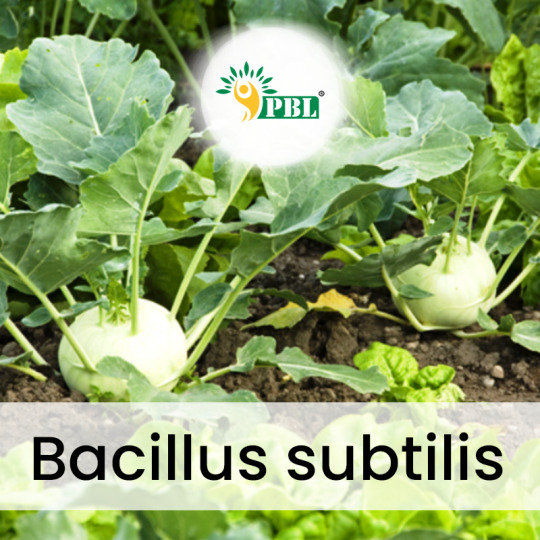
0 notes
Text
Bactericides
Bactericides are one of the main types of microbial bactericides, and they are also the most widely used microbial bactericides.
At present, the active ingredients in the bacterial fungicides registered in my country mainly include Pseudomonas fluorescens, Bacillus subtilis, Bacillus amyloliquefaciens and Bacillus cereus, etc.
Most of them are Bacillus subtilis Ingredients of fungicides.…
View On WordPress
0 notes
Text
reserve garden tac ticks
Safe Selections
At times, choices invulnerable to fine-grained buildup may be advertised. In the event that accessible, plant safe determinations of melon, cole plants, cucumber, melons, peas, pumpkins, and furthermore squash. On the off chance that you develop extra weak reaches, you may need to take control methodology.
Social Practices
Plant in warm zones as high as attainable, give great air dissemination, just as avoid utilizing overabundance manure. A decent decision is to utilize moderate delivery plant food. Costs sprinkling may help in lessening fine-grained mold since spores are wiped off the plant. Regardless, overhead sprinklers are not for the most part suggested as a control procedure in veggies on the grounds that their use may add to other bug inconveniences.
Fungicide Application
In certain circumstances, particularly in the assembling of inclined cucurbits, fungicides may be required. Fungicides work as protectants, eradicants, or both. A protectant fungicide shields against pristine diseases from occurring while an eradicant can slaughter a current contamination. Apply protectant fungicides to profoundly inclined plants preceding the infection appears. Utilization eradicants at the most punctual indications of the condition. When buildup development is broad, control with any sort of fungicide winds up being harder. The things definite underneath are for home nursery use. Business cultivators ought to talk with the UC Parasite Monitoring Standards.
Fungicides
Various least-harmful fungicides are accessible, including green oils, neem oil, jojoba oil, sulfur, just as the organic fungicide Serenade. Except for the oils, these materials are predominantly preventive. Oils work best as eradicants yet similarly have some protectant task.
Oils
To wipe out light to humble grainy buildup contaminations, utilize a cultivating oil like Saf-T-Side Spray Oil, Sunspray Ultra-Fine Spray Oil, or one of the plant-based oils, for example, neem oil or jojoba oil (e.g., E-rase). Be careful, in any case, to never utilize an oil splash inside about fourteen days of a sulfur shower or plants may be injured. Also, oils should never under any circumstance be utilized when temperature levels are over 90 ° F or to dry season focused on plants. A few plants might be considerably more sensitive than others, be that as it may, and the span needed among sulfur and oil splashes might be likewise more; consistently look for guidance from the fungicide tag for any sort of novel safeguards. Best landscape company in delhi
Sulfur
Sulfur things have been utilized to oversee fine-grained form for quite a long time however are just proficient when applied before condition signs and side effects appear. The absolute best sulfur things to utilize for fine mold control in gardens are wettable sulfurs that are uncommonly evolved with surfactants equivalent to those in dishwashing cleaning specialist (e.g., Safer Yard Fungicide) Nonetheless, sulfur can be harming to some crush and furthermore melon determinations. To forestall hurting any plant, don't matter sulfur when air temperature is close or more than 90 ° F and don't make a difference it inside about fourteen days of an oil splash. Other sulfur things, for example, sulfur earth, are substantially more testing to utilize, irritating to skin and eyes, just as limited as far as the plants they can securely be used on. Copper is additionally accessible to control fine-grained shape yet isn't actually dependable.
Natural Fungicides
Natural fungicides (like Serenade) are promptly accessible supportive microorganisms made directly into a thing that, when sprinkled on the plant, annihilates parasitic microorganisms. The dynamic fixing in Serenade is a germs, Bacillus subtilis, that guides shield against the fine-grained form from defiling the plant. While this item capacities to execute the fine-grained form living being and furthermore is innocuous to people, pets, just as helpful bugs, it has not checked to be pretty much as effective as the oils or sulfur in controlling this disease.
0 notes
Text
Fighting Vineyard Fungal Disease, With and Without Copper

For organic vintners, copper-based sprays have proven to be the most effective tool for combatting downy mildew. Prevalent in regions with warm, humid springs and summers, the fungal disease can wipe out entire vintages. Left untreated, it can even kill grapevines. For organic producers in large parts of northern Europe and the eastern U.S., copper is therefore not just a tool, but a necessity.
In January 2019, the European Commission enacted a new law lowering the amount of copper that could be used in organic farming. The ruling came after the European Food Safety Authority published a high-profile risk assessment, which showed that copper compounds pose risks for farm workers, animals, and vineyards.
In regions such as Bordeaux, organic producers must now adapt to these new limits while still effectively combating downy mildew. Otherwise, the only options are switching to synthetic chemicals or accepting significant and costly yield reductions. There may be some hope on the horizon, though: Numerous trials around the world are testing whether new, organically acceptable fungicides could supplement or even one day replace copper.
To find out how organic vintners are coping with the new limits, and to see what the future holds for regions susceptible to downy mildew, VinePair spoke with multiple Bordeaux producers and viticultural scientists with knowledge of potential innovations.
The Pros and Cons of Using Copper
While downy mildew is by no means the only challenging fungal disease vintners face, it is among the most significant. “If left unchecked, it has the potential to kill your vine [because] it reduces [the vine’s] ability to store the nutrients it needs to get through winter,” explains Dr. Katie Gold, assistant professor of grape disease ecology and epidemiology at Cornell University. ”Many of the other fungal diseases will impact crops within the season, but they won’t necessarily kill the vine.”
Since the 1800s, vintners have combated downy mildew with a copper solution called bouillie bordelaise. Otherwise known as Bordeaux mixture, the solution contains a mix of copper sulfate, lime, and water. While allowed in organic viticulture, prolonged use of high concentrations of Bordeaux mixture (and other copper-based solutions) can be extremely harmful to vineyards.
“In Europe, where they use it extensively, copper can leave heavy metals on the surface of the soil, which can not be metabolized by microorganisms,” says Dr. Akif Eskalen, plant pathologist and extension specialist at UC Davis.
When copper accumulates, it affects the concentration of useful microorganisms, the pH of the soil, and ultimately grapevine growth, Eskalen explains. In regions like Bordeaux, where copper solutions have been sprayed for over a century, this can be a common problem. The issue is further compounded by non-organic producers who use copper alongside chemical herbicides, a combination that can be toxic for soils.
But elsewhere in the world, in regions where downy mildew is not as common, copper accumulation is not an issue.
In 2019, grower-led organization Organic Winegrowers New Zealand (OWNZ) commissioned a soil assessment study, measuring the level of copper in soils after eight years of organic management. “Our independent researchers found that there was no sign of elevated copper levels in the organic vineyard soils after eight years of organic management,” says Rebecca Reider, OWNZ’s national coordinator. “We weren’t surprised by this result, but we were happy to receive it.”
How Producers Are Adapting in Regions With High Downy Pressure
This year marked the second vintage that European organic producers have been adapting to the new copper limits. Previously, vintners could spray up to 6 kilograms per hectare per year (around 5 pounds per acre). Now, they can apply 4 kilograms per hectare per year (around 3.5 pounds per acre). The law does allow levels to be taken over a seven-year average, meaning that in particularly wet vintages, producers can exceed that limit.
This year has proven to be one such vintage in Bordeaux.
Pierre Cazeneuve, owner of Château Paloumey in the Médoc, describes 2020 as one “one of the most difficult mildew pressures” he’s seen in the last 10 or 15 years. Cazeneuve has been practicing organic farming for five years, and when the copper reductions were first announced, a vintage such as this was his worst nightmare. But with just one month remaining where he will potentially have to spray, he’s surprised to find that he has so far only used half of his yearly allowance.
How has he adapted? Firstly, Cazeneuve dropped the concentration of copper he’s including in his sprays by around 25 percent. “Regularity and accuracy of spraying seem to be the best solution rather than quantity,” he says. Cazeneuve also started essential vineyard work as early as possible, and has been vigilant in keeping on top of processes that improve aeration. He’s also kept a close eye on the weather, tracking it with four different cell phone apps to ensure he’s spraying at least a day in advance when rain is on the horizon, though this is nothing new. “Some people look at Twitter, I look at weather forecasts,” he says.
While his new regime has increased his workload significantly, Cazeneuve now believes the lower copper limits seem feasible. But he stresses that it will take a few more years and statistical data from around Bordeaux to prove whether that is the case for all organic producers.
Others need less convincing. Matthieu David-Beaulieu, winemaker at St. Emillion’s Château Coutet, agrees that it’s been a particularly trying vintage. But at no point has he worried about exceeding the maximum copper limits.
Château Coutet has been certified organic since 2012, and practiced organic farming for many years before that. David-Beaulieu says the experience built up in this time, as well as the health of his vineyards, have proven effective during this challenging vintage. But for those who recently switched to organic farming, it’s been a process of learning. “They want to use a lot [of copper] to protect [the vines], they are not used to spraying such small amounts,” he says.
Copper Alternatives on the Horizon?
For producers wishing to reduce their copper use, there are currently only a handful of commercially available organic products. Examples include EF 400, which contains a mix of essential oils, and Certis USA’s OSO. But these products work only as a supplement, and are not a full-blown replacement for copper.
Around the world, trials are taking place to test the efficacy of other solutions. In Italy, some success has been found using chitosan, a naturally occurring polymer that’s extracted from the outer shells of crab and other shellfish. Laminarin, a carbohydrate extracted from brown algae, also appears to be a potentially effective supplement.
Recent studies using a microorganism called bacillus subtilis have also proven effective at inhibiting the growth of fungi such as downy mildew. But the success of biocontrol agents such as this is limited by climate, weather conditions, and location of plants, says U.C. Davis’s Eskalen.
“I’ve done a lot of research with new products, but the main problem is efficiency,” says Etienne Laveau, a Bordeaux-based consultant who specializes in organic viticulture. Laveau says that, at best, the products he’s tried have been 40 percent as efficient as copper — and that was in vintages that were much less challenging than 2020.
Laveau agrees that alternatives and supplements need to be found. But for now, he says, there remains only one path forward: “We hope that we can continue to use copper for a long time — maybe with other products to help us, but without copper it would be impossible.”
The article Fighting Vineyard Fungal Disease, With and Without Copper appeared first on VinePair.
source https://vinepair.com/articles/organic-viticulture-copper-alternatives/
0 notes